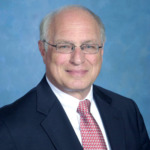
Business travel requirements, like business itself, can and do change – often dramatically and drastically. Unforeseen events, such as the onset of a pandemic, can quickly throw pilots, aircraft maintenance technicians, business managers, and even senior level executives out of work. According to Forbes Magazine, in mid-August approximately 30 million Americans (about 20 percent of the U.S. workforce) were receiving unemployment benefits or had given up seeking work.
Regardless of how skilled and proficient individuals may have been in their respective disciplines, seeking new employment generally is one area where nearly everyone qualifies as a novice. The reason is simple – searching for a job is something that the majority of people have only done rarely, and usually not for quite some period of time.
Assisting your valued team members whose departures are necessitated by circumstances beyond their control certainly is compassionate. But there are cogent reasons why doing so also is a smart business practice. Therefore, creation of well-conceived job search “flight plans” should be of critical importance for your organization, as well as for the departing employees.
As an employer, you benefit in multiple ways by helping laid-off employees in their search for a new job:
- It reduces transitioning and shifting job responsibilities challenges
- It helps minimize remaining employees’ productivity-robbing anxiety
- It contributes positively to your organization’s employment brand
- It is simply the right thing to do.
Highly Effective Job Search Support Strategies and Tactics
There are two primary ways to help employees in the transition. The first is to hire an outplacement resource – either a talented and experienced professional consultant or a large firm specializing in transitioning employees from one organization to another.
A second option is assigning an HR Business Partner in your firm, particularly a recruiting staff member, to provide outplacement assistance.
Regardless of which alternative you elect, several key elements must be included:
- Be prompt in providing support. Time off is time lost. Job searches nearly always take longer than expected.
- Offer assistance to create a brief, yet comprehensive, resume that quickly and fully showcases the value a job seeker offers prospective hiring managers. Previous roles should be concisely described, and, most importantly, two to four bulleted measurable accomplishments (metrics) listed for each position.
- Aid the employee to develop a basic cover letter template that highlights the individual’s overall background and experience. Then each letter must be tailored to the specifics of that particular job. On average, a cover letter and resume only receive 20 to 30 seconds of attention. Brevity is the job seeker’s friend.
- Encourage the employee to continually seek potential opportunities. The unwritten sales “rule of tens” is that landing the order (i.e., obtaining a new job) requires ten suspects to make a prospect, ten prospects to make a lead, and ten leads to make a sale. That number of potential opportunities must be growing constantly.
- Use your contacts and extensive referral network on behalf of your employee. A generally accepted statistic is that 75% of all jobs are not publicized. Yet, three-fourths of all job seekers spend most of their time looking only at advertised jobs. The internet and job boards should never be the only arrows in a job seeker’s quiver.
A former employee’s new job is to find his or her next job. Your job is to help them do so. The right support from a previous employer will sustain the positive attitude so critical for success. While it may seem so to the job seeker, a job search won’t last forever. When you support your employees to develop their job search “flight plans,” they can fly those flight plans effectively, and more quickly land at the desired new job destination. BAA
Steve Fushelberger is a marketing and communications consultant to the business, general, commercial, and defense aviation industries. Possessing a Commercial Pilot license, he’s held senior leadership positions at Rolls-Royce, United Air Lines, Textron Aviation, and Leonardo.





